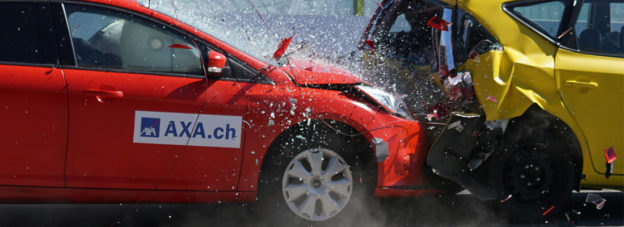In Rodriguez v. City of New York, 2018 N.Y. LEXIS 793, 2018 NY Slip Op. 02287 (Apr. 3, 2018), New York’s Court of Appeals, New York’s highest court, addressed the question of whether a plaintiff, in moving for summary judgment on the issue of the defendant’s liability, also needs to establish the absence of his or her own comparative negligence. In a 4-3 decision, a majority of the court held that, because the plaintiff’s comparative negligence is a matter of damages, not liability, the plaintiff does not bear that burden.
In Rodriguez, Carlos Rodriguez (Rodriguez), a City of New York Department of Sanitation garage utility worker, was injured while “outfitting” sanitation trucks with tire chains and snow plows. The accident occurred when a truck being improperly guided by another member of the outfitting team crashed into a parked Toyota Prius and propelled the car into Rodriguez, pinning him up against a rack of tires. After the incident, Rodriguez filed a negligence action against the City of New York (City). When the parties completed discovery, Rodriguez moved for partial summary judgment and the City filed a cross-motion. The trial court denied both motions, finding, among other things, that there were triable issues of fact regarding Rodriguez’s comparative negligence.
The Appellate Division affirmed the denial of the plaintiff’s motion, holding that Rodriguez was not entitled to partial summary judgment on the issue of the City’s liability because he failed to make a prima facie showing that he was free from comparative negligence. The Appellate Division then certified the question of whether it properly affirmed the trial court’s decision to the Court of Appeals.
Pursuant to CPLR 3212, a court should grant a motion for summary judgment if the movant establishes that it is entitled to judgment as a matter of law. However, as noted in CPLR 3212(b), to secure summary judgment, the movant must also “show that there is no defense to the cause of action.” Although the City argued that the court should deny the plaintiff’s motion on the issue of liability because the plaintiff failed to establish, as a matter of law, that he was not contributorily negligent, the Court of Appeals, citing CPLR 1411, disagreed.
As noted by the court, CPLR 1411 states that, in an action for damages for, among other things, personal injury or injury to property, plaintiff’s culpable conduct does not bar recovery but, rather, diminishes the plaintiff’s recoverable damages in proportion to the plaintiff’s culpable conduct. Pursuant to CPLR 1411, courts, consistent with New York’s pure comparative fault system, should only consider a plaintiff’s comparative fault when considering the amount of damages owed, not as a defense to the cause of action. However, even if the plaintiff establishes the defendant’s liability as a matter of law, the jury should still determine whether the plaintiff was negligent and whether such negligence was a proximate cause of the plaintiff’s injuries. The trial court, moreover, should, as it does in cases where there is a bifurcated trial on the issue of liability, instruct the jury on the issue of the defendant’s negligence.
The court’s ruling in Rodriguez clarifies that plaintiffs in both property damage and personal injury cases can move for summary judgment even if questions of fact remain with respect to the issue of the plaintiff’s comparative fault. This clarification should broaden a subrogation professional’s pre-trial arsenal because, if the plaintiff successfully moves for partial summary judgment and establishes the defendant’s liability, the plaintiff can exert more pressure on the defendant to settle the case.

